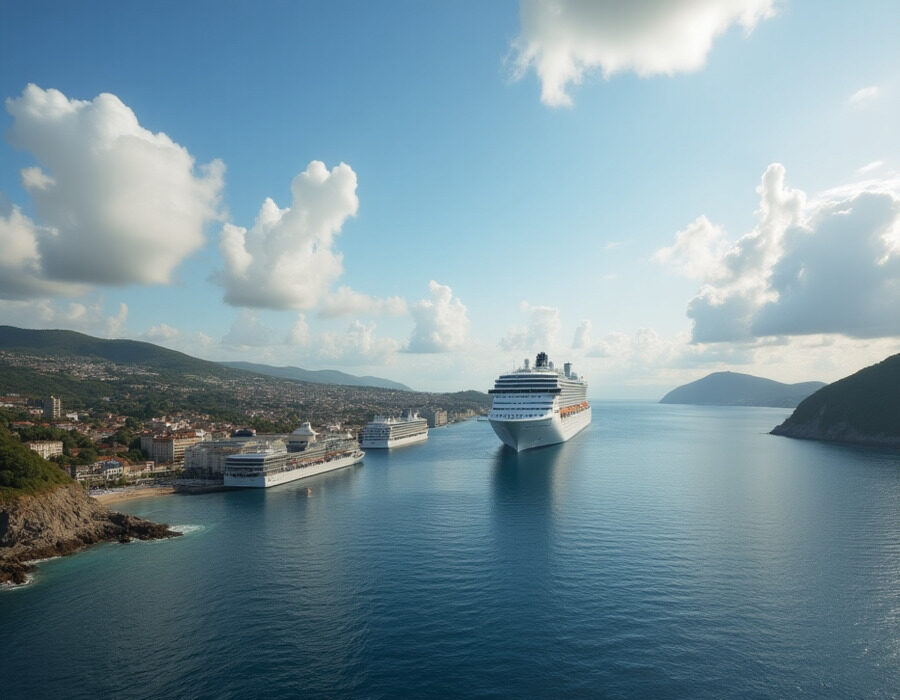Thursday, May 29, 2025
The UK is set to introduce a transformative cruise ship levy that aims to revolutionize how tourism is managed while bolstering local economies. This innovative measure responds to the increasing pressure that rising visitor numbers place on infrastructure and communities, particularly in popular destinations. By empowering local authorities to implement tailored levies, the UK seeks to ensure sustainable tourism growth, protect fragile environments, and deliver long-term economic benefits for residents and businesses alike.
New Powers Proposed for Local Authorities to Introduce Cruise Ship Levy Across Scotland
Local authorities in Scotland may soon be empowered to impose a levy on cruise ships docking in their ports, a move aimed at generating additional revenue to support infrastructure and manage the growing impact of tourism. This proposal has received backing from The Highland Council, which recognizes the need for sustainable visitor management to protect the region’s natural and cultural assets while maintaining its status as a world-class tourist destination.
Addressing the Rising Pressure of Cruise Tourism
The cruise industry has seen significant growth in recent years, bringing substantial economic benefits to many regions, including the Scottish Highlands. However, like all visitors, cruise passengers place pressure on local infrastructure, services, and the environment. The increasing number of cruise ships and passengers visiting Scottish ports has raised concerns about the sustainability of tourism growth and the need for dedicated funding to mitigate negative impacts.
The proposed levy would provide local councils with a new funding mechanism to help alleviate these pressures. The idea is that revenue collected through the levy could be reinvested into facilities directly used by cruise visitors—such as improved visitor centers, transportation links, or public amenities—or allocated according to local priorities to enhance the overall tourist experience.
Highland Council’s Support and Strategic Vision
At a recent meeting of The Highland Council’s Economy and Infrastructure Committee, members expressed strong support for the levy proposal. They highlighted how additional funds would enable the council to better manage tourism impacts and ensure the area remains an attractive and sustainable destination for visitors from around the world.
The Highlands are home to a diverse range of ports and harbours—16 in total—that receive cruise ship traffic. These vary widely, from the bustling Port of Cromarty Firth in Invergordon, the busiest cruise port in Scotland, to smaller rural harbours like Shieldaig, which only accommodates a handful of small vessels annually. The region’s unique geography and natural beauty draw large numbers of tourists, making effective management crucial.
Passenger numbers in Highland ports reached nearly 300,000 in 2023, with cruise vessel gross tonnage hitting the 10 million GT mark. Projections show continued growth, with the number of cruise ships expected to increase from 893 in 2019 to around 1,000 by 2024, carrying over 1.2 million passengers. Peak days can see thousands of visitors arriving simultaneously, such as the record 9,600 visitors to the Port of Invergordon on its busiest day.
Learning from International Examples
While this would be the first levy of its kind in the UK, many European cities already successfully operate cruise levies. Ports such as Amsterdam, Barcelona, Dubrovnik, and Venice charge fees per passenger, typically ranging between €3 and €14. These charges help fund tourism infrastructure and preserve local environments impacted by large numbers of visitors.
The Highland Council proposes a similar approach, suggesting the levy should be based on the number of passengers carried by each ship. Cruise lines would collect the levy from passengers and remit it to the local authority, simplifying administration and ensuring accurate revenue collection.
Importantly, council members emphasize that local authorities themselves should set levy rates and retain the funds within their own regions. This would allow revenue to be strategically deployed where tourists actually visit, maximizing positive impacts on local businesses and public services.
Beyond Islands: A Wider Scottish Approach
The Scottish Government’s consultation also suggests giving island authorities the power to charge levies on visitors arriving by any means of transport, not just cruise ships. While this approach acknowledges the unique challenges faced by island communities, The Highland Council urges the government to broaden the scope.
Highland representatives advocate for a Point of Entry levy system that would apply throughout Scotland, allowing all local authorities the discretion to introduce levies within their own areas. This would enable a fairer, more comprehensive response to tourism impacts across mainland and island destinations alike.
In addition to cruise ship visitors, The Highland Council is developing proposals to charge fees at entry points into the Highlands for other vehicles such as motorhomes and campervans, which have also increased in number and contribute to pressure on infrastructure.
Opposition from Port Operators
Despite strong support from the council and tourism advocates, some stakeholders have raised concerns. Operators of the Port of Cromarty Firth, which handles the largest share of cruise traffic in the Highlands, are strongly opposed to introducing a new passenger levy.
This year, the port expects to welcome almost 100 cruise liners, bringing in about 150,000 passengers. Ships already pay fees for using port facilities such as wharfs and quays. Port management warns that an additional levy could deter cruise operators from including Invergordon in their itineraries.
Research conducted by the port suggests that a hypothetical £5 charge per passenger would increase costs for cruise companies by nearly 23%. They estimate this could cause one in ten cruise businesses to choose alternative destinations, potentially resulting in millions of pounds in lost tourist spending for the Highland economy.
Potential Economic Impact and Concerns
Cruise visitors to the Highlands are estimated to spend at least £100 each during their visits. Port representatives argue that adding extra charges could disrupt this economic flow, affecting not only the port but also local businesses, shops, restaurants, and service providers that rely on tourist spending.
Joanne Allday, head of strategy and business at Port of Cromarty Firth, expressed concern that the increased costs could ripple through the local economy, harming a wide range of enterprises dependent on cruise tourism.
The UK is introducing a groundbreaking cruise ship levy to better manage tourism and support local economies. This move addresses growing visitor pressures by giving authorities new powers to protect communities and promote sustainable growth.
Balancing Growth with Sustainability
The debate over the cruise ship levy reflects broader challenges faced by popular tourist destinations globally—how to balance economic growth with sustainable management of resources and community wellbeing.
With tourism continuing to expand, particularly in scenic and sensitive areas like the Scottish Highlands, having targeted financial mechanisms to mitigate impacts is increasingly seen as necessary.
If implemented thoughtfully, a cruise ship levy could provide essential funding to improve infrastructure, protect local environments, and ensure visitors enjoy high-quality experiences while supporting the long-term health of the region’s economy and communities.



